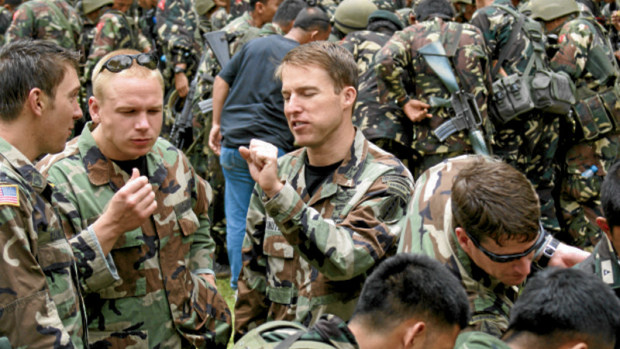
In this photo taken in 2008, US Army soldiers join members of the Philippine Army’s 103rd Brigade in a boodle fight in celebration of a successful peacekeeping mission in Lanao del Sur province. —RICHEL V. UMEL
A new batch of US Special Forces has arrived in Mindanao to replace those who already left, the Armed Forces of the Philippines confirmed on Wednesday.
Brig. Gen. Restituto Padilla, AFP spokesman, could not say how many US soldiers arrived a few days ago in Western Mindanao Command (Wesmincom) in Zamboanga City to replace the batch that left as the US side would not also reveal the number.
But a source privy to the information but is not authorized to speak on the matter said the total of US Special Forces in Mindanao has remained the same at 107.
In September, Defense Secretary Delfin Lorenzana assured that US Special Forces would continue to stay in Mindanao despite President Duterte’s President Rodrigo Duterte’s harsh words that he wanted them out of the region.
Lorenza later clarified this statement with the President and later said the chief executive was merely concerned about the safety of US soldiers who might be targetted by the terrorist Abu Sayyaf group.
According to the defense chief, the US military in Mindanao has been providing the surveillance capability for the AFP, particularly in Zamboanga, Basilan, Sulu and Tawi-Tawi.
“They are using two types of assets: a small aircraft with night flying capability and three drones,” he stated,” Lorenzana said then.
Padilla said the AFP still needed the US soldiers because they still continue to provide capabilities that the AFP did not have.
“We have not officially communicated any request for US pullout from Mindanao. You have to understand the President,” Padilla stressed.